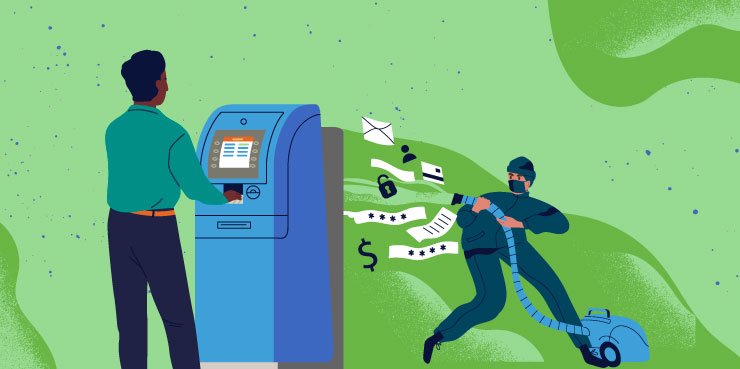Uncategorized
can cloned cards be traced
Understanding the Traceability of Cloned Cards
In today’s digital age, the convenience of credit and debit cards often comes at the cost of increased vulnerability to fraud. One of the most concerning types of fraud is card cloning. But can cloned cards be traced? This article explores the traceability of cloned cards, how card fraud detection works, and the implications for both consumers and fraudsters.
What Are Cloned Cards?
Cloned cards are illegal copies of legitimate credit or debit cards. Fraudsters use various methods to capture the card information, such as skimming devices installed on ATMs or point-of-sale terminals. Once the card data is captured, it’s transferred onto a blank card, creating a clone of the original. With this clone, the fraudster can make unauthorized purchases or withdraw cash, leaving the cardholder responsible for the charges.
How Does Card Cloning Occur?
Skimming Devices
Skimming is a common method for capturing card data. Skimmers are small devices that are discreetly attached to card readers at ATMs or gas pumps. When a customer inserts their card, the skimmer reads and stores the card’s magnetic stripe information. Some sophisticated skimmers can even capture PIN numbers.
Data Breaches
Data breaches at major retailers or financial institutions can expose millions of card numbers. Hackers infiltrate the systems and extract card information, which can then be sold on the dark web. These breaches provide a wealth of data for fraudsters to create cloned cards.
Phishing Attacks
Phishing involves tricking individuals into providing their card information through fake emails or websites. Once the data is obtained, it’s used to create cloned cards or make fraudulent online purchases.
Can Cloned Cards Be Traced?
The traceability of cloned cards depends on several factors, including the methods used for fraud detection and the vigilance of financial institutions. While it is challenging, tracing cloned cards is not impossible.
Advanced Fraud Detection Systems
Financial institutions employ advanced fraud detection systems that use algorithms and machine learning to identify unusual transactions. These systems analyze patterns in spending behavior and can flag transactions that deviate from the norm. For example, if a card that is usually used in New York is suddenly used in Tokyo, it might trigger an alert.
Monitoring Transaction Patterns
Banks and credit card companies closely monitor transaction patterns for any signs of fraud. They may contact the cardholder to verify suspicious activities. Quick detection can prevent further unauthorized transactions and help trace the origin of the fraud.
EMV Chip Technology
The introduction of EMV chip technology has made it more difficult to clone cards. Unlike magnetic stripes, EMV chips generate a unique transaction code for each purchase, making it harder for fraudsters to duplicate. While not foolproof, this technology has significantly reduced the incidence of card cloning.
What Happens When a Cloned Card Is Detected?
When a cloned card is detected, the following steps are typically taken:
- Cardholder Notification: The cardholder is notified immediately about the suspicious activity. They may be asked to verify recent transactions.
- Card Deactivation: The affected card is deactivated to prevent further unauthorized use. A replacement card is usually issued promptly.
- Investigation: The financial institution will investigate the fraudulent activity. This may involve reviewing transaction data and collaborating with law enforcement.
- Reimbursement: In most cases, cardholders are not held liable for fraudulent charges if they report them promptly. Banks will reimburse the lost funds after verifying the fraud.
The Role of Consumers in Fraud Prevention
While financial institutions play a significant role in detecting card fraud, consumers also have a part to play in prevention. Here are some steps individuals can take to protect themselves:
Regularly Monitor Account Statements
Reviewing account statements regularly can help spot unauthorized transactions early. Many banks offer alerts for unusual activity, enabling consumers to act quickly.
Use Secure ATMs and Terminals
Choose ATMs and point-of-sale terminals that are in well-lit, secure locations. Avoid using machines that appear tampered with or have loose parts.
Be Cautious Online
When shopping online, ensure the website is secure (look for HTTPS in the URL) and avoid entering card information on suspicious sites. Use strong, unique passwords for online accounts.
Conclusion
Cloned cards pose a significant threat to consumers and financial institutions. While tracing cloned cards can be challenging, advancements in fraud detection technology have made it more feasible. Both financial institutions and consumers must remain vigilant to minimize the risk of card cloning and fraud.
By understanding the traceability of cloned cards and taking preventive measures, individuals can protect themselves from becoming victims of card fraud. As technology continues to evolve, so too will the methods for detecting and preventing fraud, ultimately safeguarding the financial well-being of consumers.


